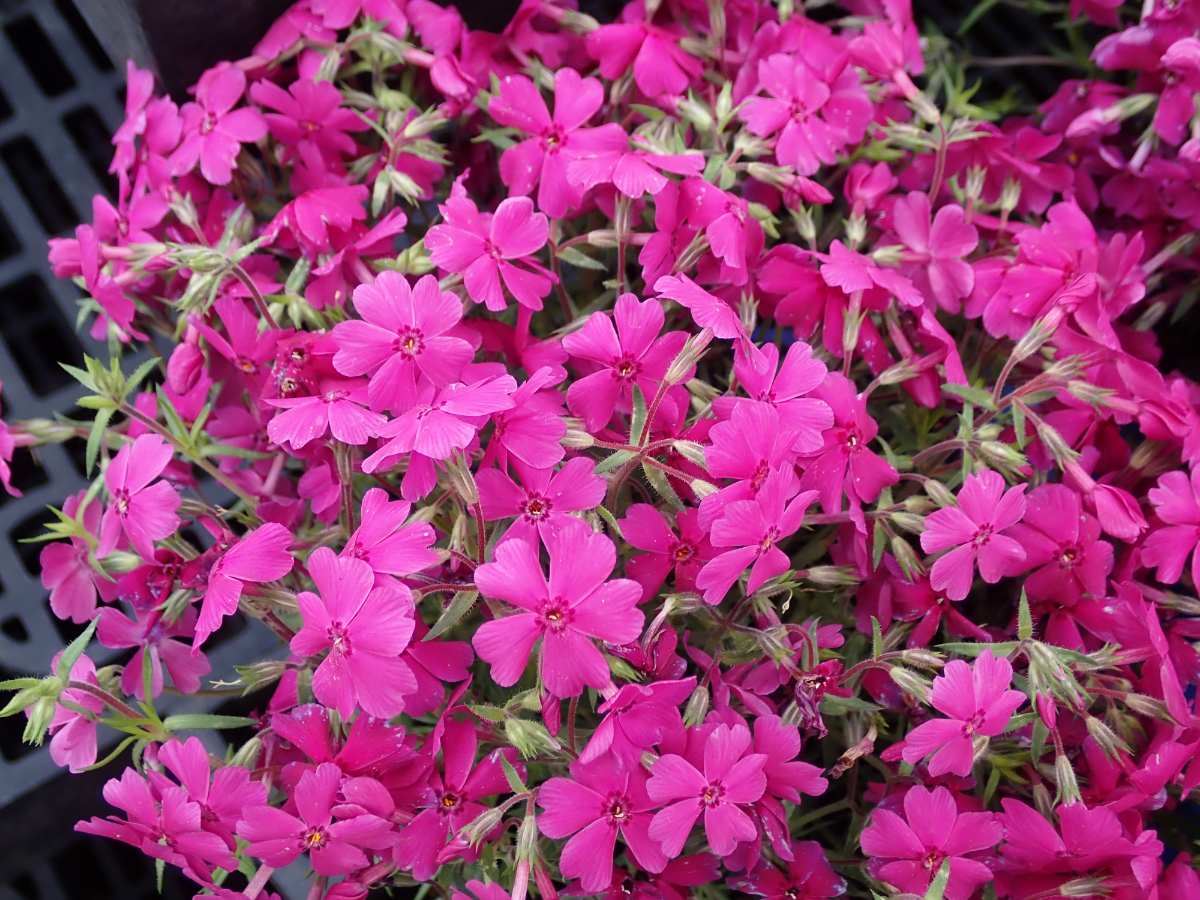
Creating defensible space around your home doesn’t need to be boring. The following trees, shrubs, ground covers, and flowers are among the best options for fire-resistant landscaping due to their high moisture content and low flammability.
Living in a desert climate that experiences wildfires, many of these fire-resistant landscaping plants are staples in my yard, partly because they’re fire wise, but also because they are typically low-maintenance, drought resistant, and grow in poor soil conditions.
Fire-Resistant Trees
Cottonwood
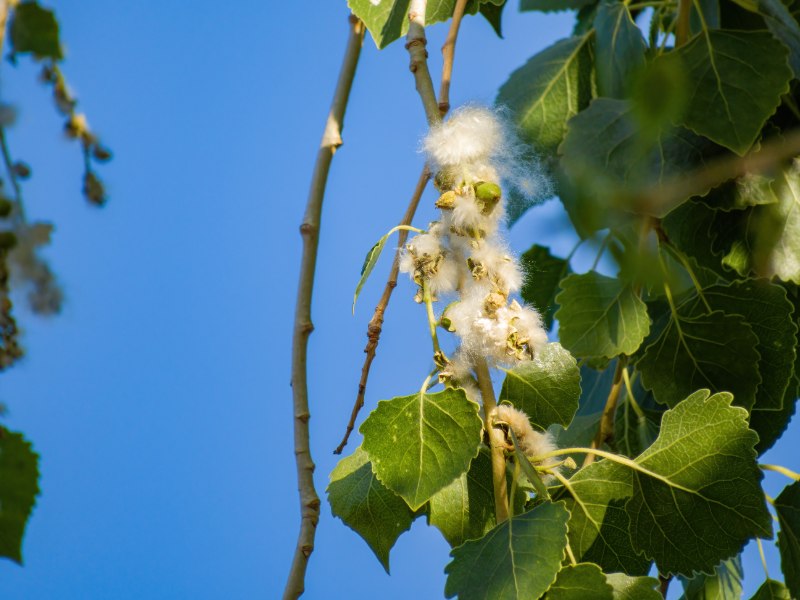
USDA Growing Zones: 2 through 9
Mature Height: 65 to 100 feet
Mature Width: 75 to 100 feet
Bloom Time: April to May
Flower Color: Reddish catkins on male trees; yellow-green catkins on female trees
Growing Conditions: Grows in most soil types and pH values; tolerant of drought and air pollution
Cottonwoods (Populus deltoides) are massive hardwoods with distinctive triangular leaves that rustle in the wind. They offer spectacular golden fall color and provide excellent shade. Their fire resistance comes from their thick, fleshy leaves and non-resinous bark, which starts smooth and pale gray-green, maturing to deeply grooved and ash-colored on established trees.
Poplar
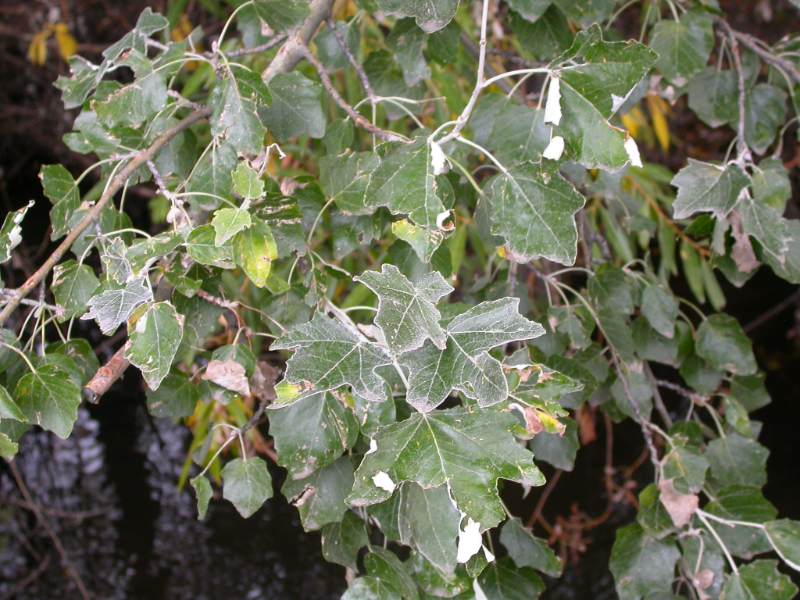
USDA Growing Zones: 3 through 9
Mature Height: 50 to 160-165 feet
Mature Width: 30 to 60 feet
Bloom Time: Springtime before leaves open
Flower Color: Yellow, white, or red catkins
Growing Conditions: Prefer temperate climates with mild winters and moderate summers; need fertile, moist soil
Poplar trees (Populus alba) are fast-growing deciduous trees with columnar growth that’s become popular in gardens throughout the United States. Noted for their long branches that quake with the wind, the branches grow more parallel to the main trunk, creating a tall, slender silhouette that helps reduce fire intensity, making them fire safe.
Chokecherry
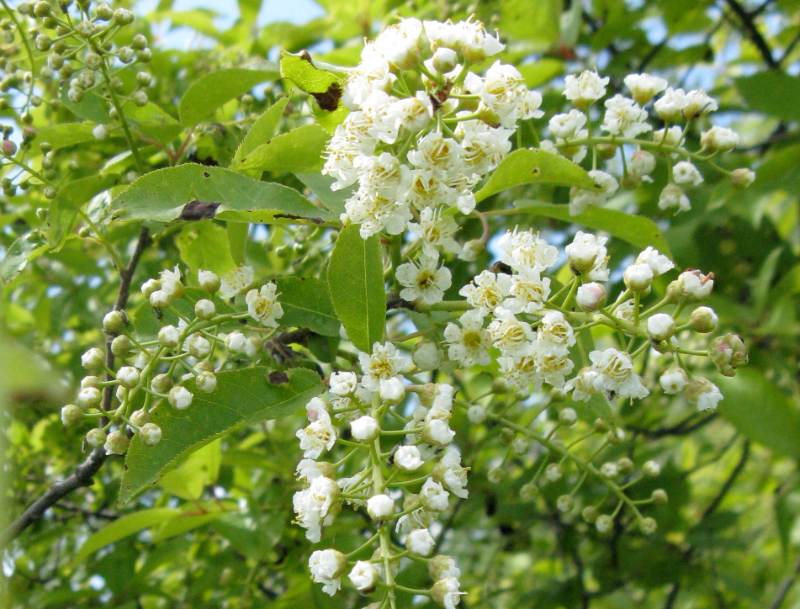
USDA Growing Zones: 2 through 7
Mature Height: 20 to 30 feet
Mature Width: 10 to 20 feet
Bloom Time: April to July
Flower Color: Creamy white
Growing Conditions: Grows in a variety of soil types, but prefers moist conditions
Chokecherry trees (Prunus virginiana) are small, hardy, and native to North America. An extremely cold-hardy, drought-tolerant tree, they provide valuable wildlife habitat and food while serving as excellent windbreaks and erosion control plants. Their high moisture content offers excellent fire resistance in wildfire areas.
They produce fragrant, creamy-white flower clusters in spring, followed by dark red to purple-black astringent fruit used for jams and jellies.
| Maintaining proper spacing between trees and shrubs is key to creating defensible space. If you need help with light tree trimming, let a LawnStarter tree care pro take care of this chore for you. Our customers pay an average of $238 for small tree trimming jobs. |
Common Hackberry
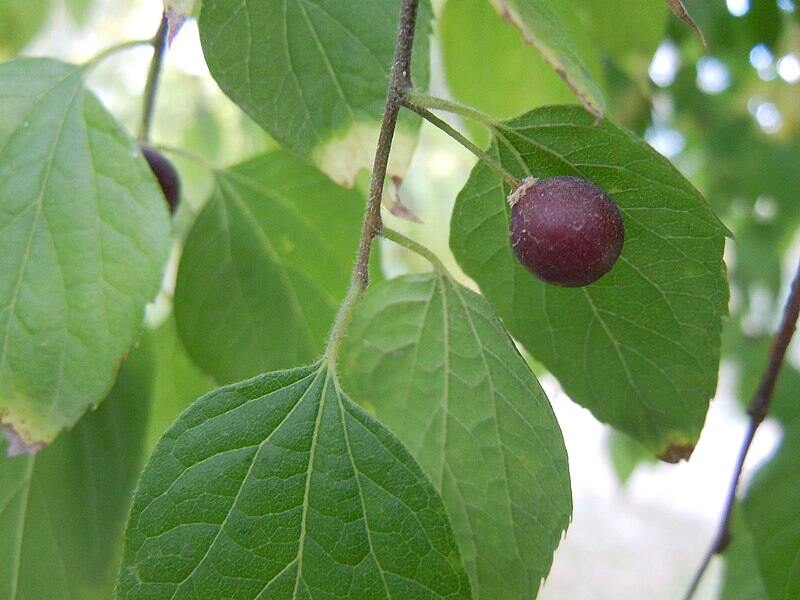
USDA Growing Zones: 2 through 9
Mature Height: 40 to 60 feet
Mature Width: 25 to 45 feet
Bloom Time: April to May
Flower Color: Inconspicuous
Growing Conditions: Highly adaptable to all soil types and pH values; very drought resistant
Hackberry trees (Celtis occidentalis) are native deciduous trees with cork-like bark that provides natural insulation against fire damage. Once established, they’re tolerant of wind, drought, road salt, and pollution.
Serving as host plants for the Tawny Emperor and other butterflies, these fast-growing trees are valuable for wildlife habitat. They produce small, dark purple drupes that persist through winter, providing a valuable food source.
See Related:
Red Maple
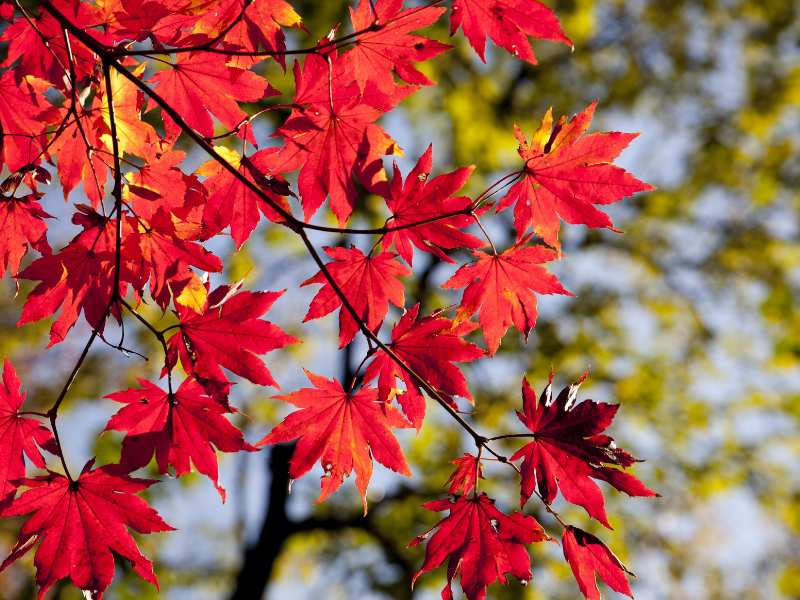
USDA Growing Zones: 3 through 9
Mature Height: 40 to 70 feet
Mature Width: 30 to 40 feet
Bloom Time: March to April
Flower Color: Bright red
Growing Conditions: Tolerates a range of soil types and pH values, but prefers slightly acidic, well-drained soils
Red maple trees (Acer rubrum) offer fire resistance through their high moisture content and deciduous nature, reducing dry fuel accumulation. These fast-growing natives have lobed leaves that are green above and pale underneath. Highly adaptable to diverse soils and urban conditions, they’re popular with homeowners for their low-maintenance needs and reliable red fall color.
See Related: 5 Signs of Acidic Soil in Your Lawn (Low pH)
Fire-Resistant Shrubs
Lilac
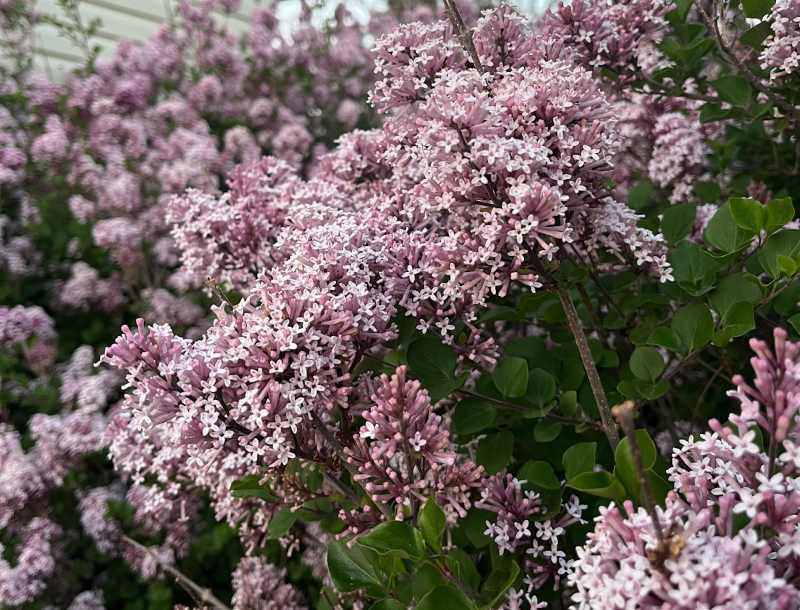
USDA Growing Zones: 2 through 8
Mature Height: 8 to 15 feet
Mature Width: 6 to 12 feet
Bloom Time: May to June
Flower Color: Shades of purple, but also white, pink, and yellow
Growing Conditions: Prefer moist but well-drained, slightly alkaline soil
Lilacs (Syringa vulgaris) are firewise with their high moisture content and thick leaves that reduce ignition risk. These hardy plants produce sweetly fragrant clusters of purple to white flowers in late spring, requiring cold exposure for blooming. Thriving in cooler climates but struggling in hot, humid areas, lilacs can survive 100+ years while attracting butterflies to gardens.
| As with trees, it’s important to keep your shrubs well trimmed in wildfire-prone areas. Let a LawnStarter bush trimming pro trim your shrubs to protect your home. Our customers pay an average of $88 for light bush trimming around their property. |
See Related: How to Prune Lilac Bushes Like a Pro
Buffaloberry
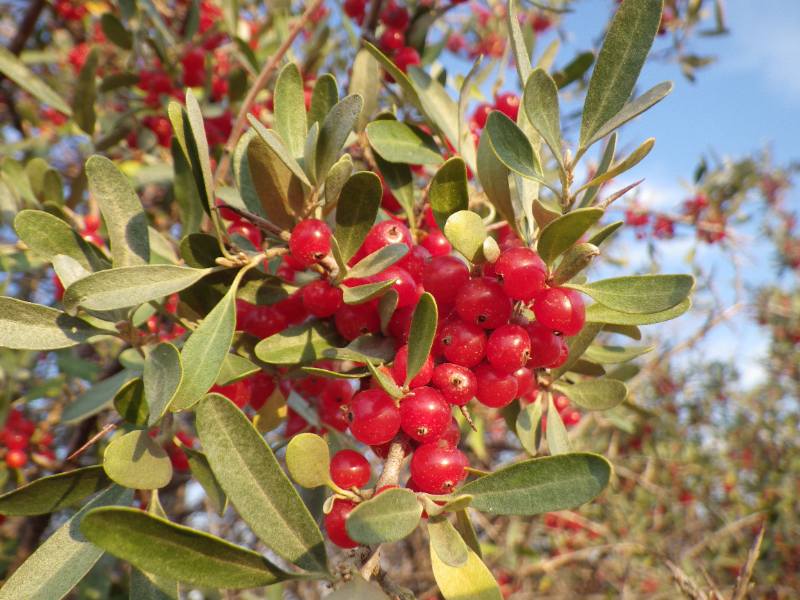
USDA Growing Zones: 3 through 9
Mature Height: 8 to 14 feet
Mature Width: Up to 12 feet
Bloom Time: Early spring
Flower Color: Inconspicuous yellow
Growing Conditions: Tolerates poor soil, tends to grow along waterways in the Midwest, and drier, gravelly spots in the West
Buffaloberry (Shepherdia spp.) is a hardy, nitrogen-fixing (although non-leguminous) deciduous shrub known for its excellent drought and cold hardiness. Plants have thorny stems and thick, silvery-scaled leaves (that help reduce ignition potential). In the fall, they develop bright red, edible berries. They thrive in poor, dry soils but also grow well in moist areas.
Cotoneaster
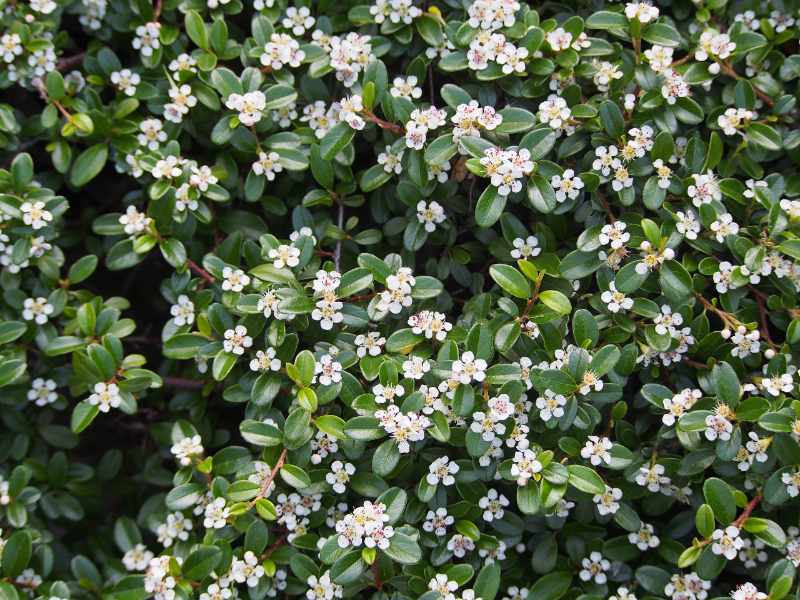
USDA Growing Zones: 4 through 8
Mature Height: Up to 10 feet
Mature Width: 2 to 3 times its height
Bloom Time: Late spring to early summer
Flower Color: White and pink
Growing Conditions: Adapts to any well-drained soil
Cotoneasters (Cotoneaster spp.) are hardy, fire-resistant shrubs characterized by their thick, moisture-retaining leaves and low, spreading growth habit, which reduces flame height. Ranging from 10-inch ground covers to tall hedges, these resilient plants produce small white or pink spring flowers followed by bright red or orange winter berries.
They easily tolerate drought, winds, salt spray, poor soils, and variable pH conditions.
Oceanspray
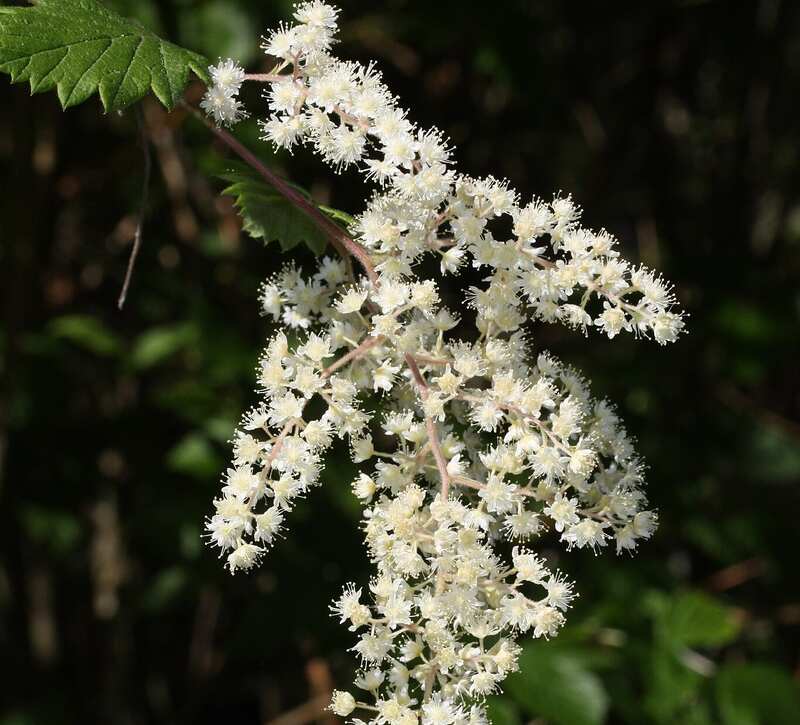
USDA Growing Zones: 4 through 9
Mature Height: 6 to 10 feet
Mature Width: 6 to 10 feet
Bloom Time: Late spring to late summer
Flower Color: Creamy white
Growing Conditions: Adaptable to a range of soil types, pH values, and moisture conditions
Oceanspray (Holodiscus discolor) is a fire-resistant shrub with high leaf moisture content and graceful, arching branches bearing deeply lobed, serrated green foliage. Native to Western North America, it displays spectacular 12-inch plumes of creamy-white flowers from late spring through summer.
Remarkably adaptable to various soils and moisture conditions, oceanspray attracts bees, hummingbirds, and beneficial insects while providing excellent erosion control.
See Related:
- How to Create a Pollinator Lawn
- How to Attract Hummingbirds to Your Garden
- How to Attract Birds to Your Yard
Viburnum

USDA Growing Zones: 2 through 9
Mature Height: Up to 30 feet
Mature Width: Up to 12 feet
Bloom Time: April to May
Flower Color: White
Growing Conditions: Prefers slightly acidic, well-drained soil, but adapts to many soil types
With approximately 150 species, viburnums (Viburnum spp.) are considered fire-resistant due to their high leaf moisture content and growth that stays low to the ground. These popular flowering shrubs display rich clusters of spring blooms, complemented by bright green foliage. As the season progresses, bright red berries appear, giving way to stunning color changes in the fall.
Once established, these low-maintenance shrubs resist pests and diseases.
Fire-Resistant Ground Covers
Woolly Thyme
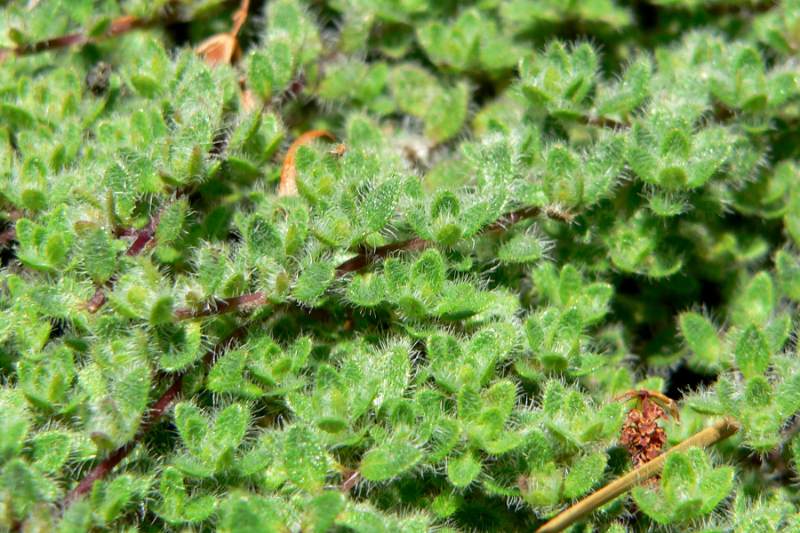
USDA Growing Zones: 4 through 7
Mature Height: 12 inches
Mature Width: 18 inches
Bloom Time: Summer
Flower Color: Pale pink
Growing Conditions: All types of well-draining soil
Woolly thyme (Thymus pseudolanuginosus) is a fire-resistant ground cover that creates dense growth that smothers the soil, preventing more flammable weeds from taking root. This low-growing mat features tiny, fuzzy gray-green foliage with pale pink summer flowers.
Popular with homeowners for its drought tolerance and minimal maintenance, it provides an attractive, soft carpet.
See Related: Best Drought-Tolerant Ground Covers
Creeping Phlox

USDA Growing Zones: 3 through 9
Mature Height: 6 inches
Mature Width: 2 feet
Bloom Time: Mid to late spring
Flower Color: Pink to purple, to blue
Growing Conditions: Slightly acidic, well-drained soil, rich in organic matter
Creeping phlox (Phlox stolonifera) is a ground-hugging variety that is smothered in spring by cheery flowers, leaving behind an attractive mat of needle-like, linear leaves. This low-growing perennial creates a dense ground cover that stays close to the soil, reducing flame height and fuel continuity. It is popular for its vibrant spring blooms and minimal maintenance requirements.
Hens and Chicks
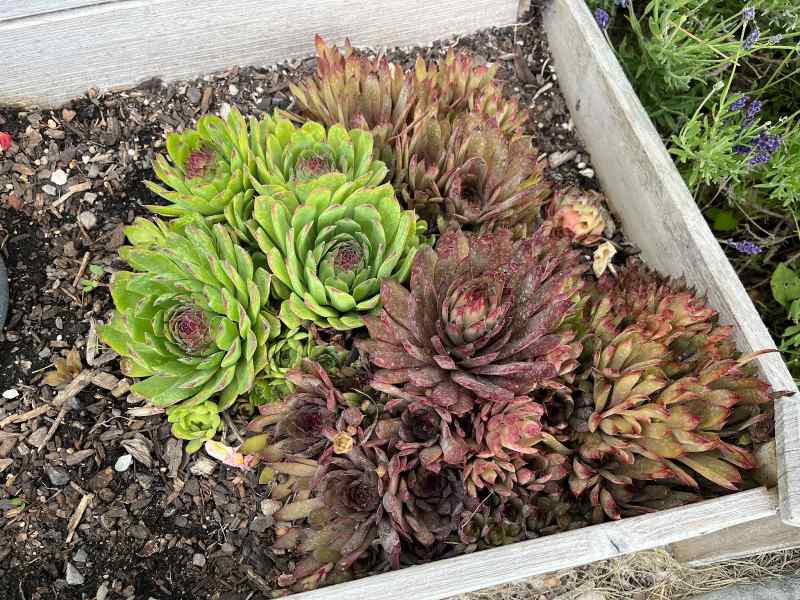
USDA Growing Zones: 3 through 8
Mature Height: 4 to 6 inches
Mature Width: Clumps 24 to 36 inches
Bloom Time: Summer
Flower Color: White, yellow, or pale pink
Growing Conditions: Well-draining, gritty soil
Hens and chicks (Sempervivum tectorum) are popular succulents with thick, fleshy leaves forming symmetrical rosettes in shades of green, pink, blue, grey, purple, orange, burgundy, and bicolors. These low-growing plants store water in their leaves, making them less likely to ignite. Drought-tolerant and easy-to-care-for, they create attractive ground cover while enhancing fire safety in defensible landscaping.
Fire-Resistant Flowers
Daylily
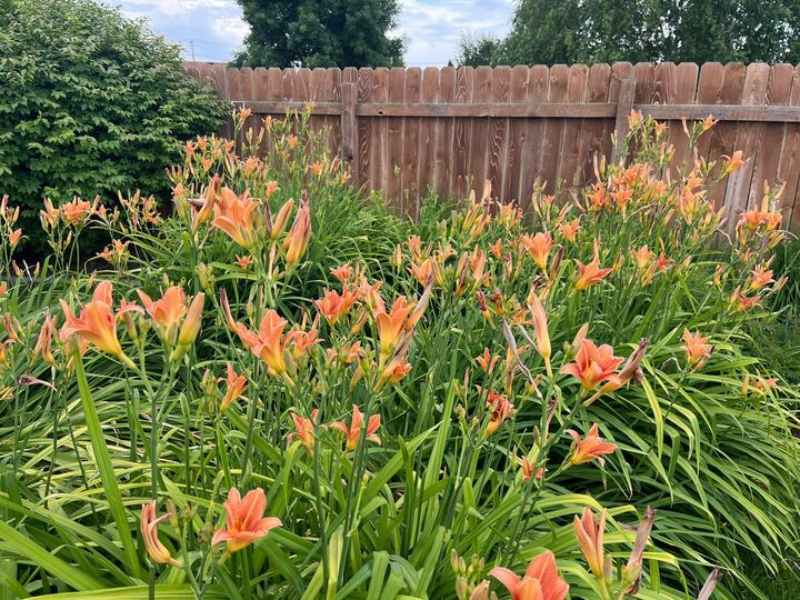
USDA Growing Zones: 3 through 9
Mature Height: 3 feet
Mature Width: 1 to 3 feet
Bloom Time: June to July
Flower Color: Nearly every hue but white and blue
Growing Conditions: Prefers well-draining, fertile soil, but adapts to many conditions
Daylilies (Hemerocallis spp.) are fantastic perennials with an abundance of thick, moisture-retaining foliage that reduces ignition risk in defensible landscaping. Popular with homeowners for their reliability and low maintenance, these hardy plants produce trumpet-shaped blooms in vibrant colors from spring through fall. Each flower lasts one day, but abundant buds ensure continual blooming. They thrive in diverse conditions with minimal care requirements.
Yarrow
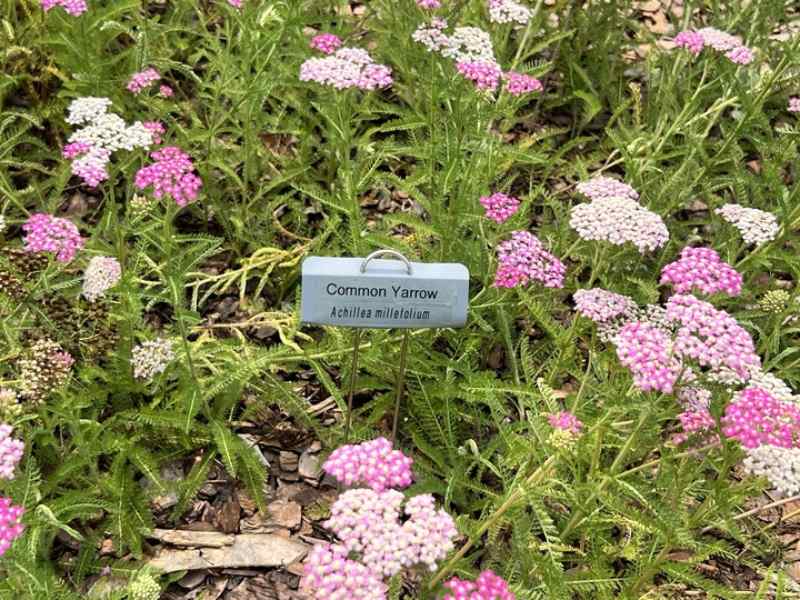
USDA Growing Zones: 3 through 9
Mature Height: 2 to 4 feet
Mature Width: 1 to 2 feet
Bloom Time: April to October
Flower Color: White, pink, red, orange, yellow
Growing Conditions: Average to poor, well-draining soil
Yarrow (Achillea millefolium) is another fantastic fire-resistant perennial with a lower growth habit and high moisture content in its feathery foliage. Popular with homeowners for extreme drought tolerance and virtually no maintenance requirements, these hardy plants produce flat-topped flower clusters in white, yellow, pink, and red from late spring through fall while attracting beneficial pollinators.
Sedum

USDA Growing Zones: 3 through 9
Mature Height: Up to 24 inches, depending on variety
Mature Width: Up to 3 feet, depending on variety
Bloom Time: Early summer into fall
Flower Color: White, yellow, pink, and red
Growing Conditions: Loamy, sandy, or gravelly soil with good drainage
Sedums (Sedum spp.) are go-to fire-resistant plants with thick, water-storing leaves that resist ignition and low growth habits that reduce fuel continuity. Popular with homeowners for their drought tolerance and zero-maintenance care, these hardy succulents come in hundreds of varieties ranging from creeping ground covers to upright border plants. They produce star-shaped flowers in various colors and thrive in poor soils.
Iris
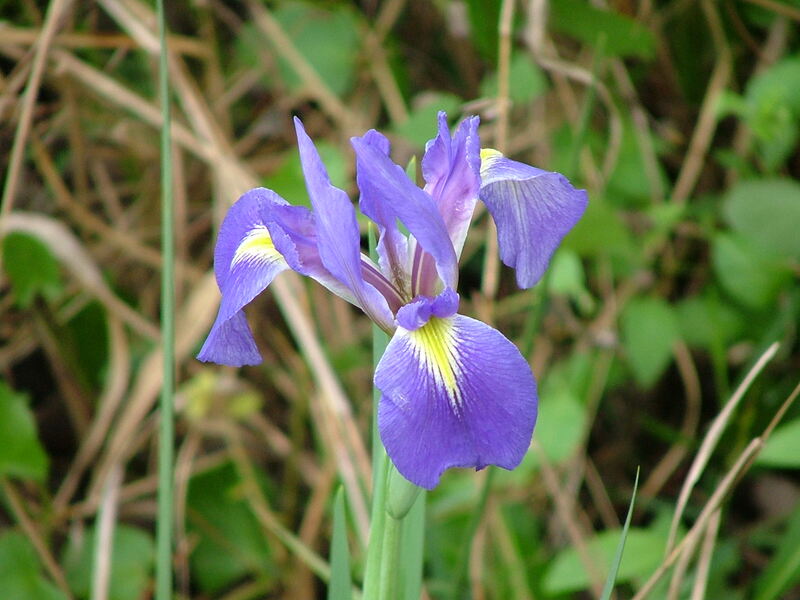
USDA Growing Zones: 3 through 9
Mature Height: 2 to 4 feet
Mature Width: Up to 18 inches
Bloom Time: Late spring to early summer
Flower Color: All colors except blue
Growing Conditions: Well-draining, fertile, neutral to slightly acidic soil
Irises (Iris spp.) are fire-resistant perennials with thick, moisture-retaining, sword-like foliage that reduces ignition risk. Popular with homeowners for their reliability and stunning diversity, these hardy plants offer hundreds of varieties in every color except true blue. Producing elegant flowers from late spring through early summer, they thrive with minimal care while providing vertical structure and seasonal interest.
To create the most striking interest, plant a few varieties that have different bloom times, to create a longer window of color.
Lavender
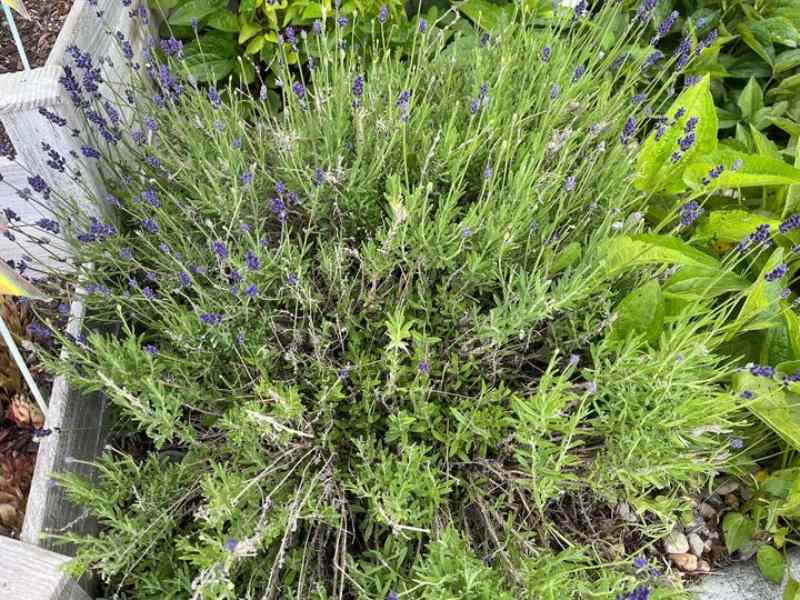
USDA Growing Zones: 5 through 9
Mature Height: 2 to 3 feet
Mature Width: Up to 18 inches
Bloom Time: June to August
Flower Color: White, pink, blue-violet, and purple
Growing Conditions: Well-drained, neutral to slightly alkaline soils; tolerates low fertility
Known for its aromatic foliage, lavender (Lavandula spp.) makes a striking addition to fire-safe landscapes with a compact, low-growing habit that helps reduce fuel loads. Popular with homeowners for drought-tolerance and fragrant purple, pink, and white flower spikes, these Mediterranean natives bloom throughout the summer. They require minimal maintenance and help attract pollinators.
See Related: Top 10 Native Plants for Your Pollinator Garden
FAQ About Fire-Resistant Landscaping Plants
No, not even fire-resistant plants are completely fireproof. By definition, fire-resistant plants do not readily ignite during fire conditions. But when properly maintained, if they ignite, they won’t add to a wildfire’s intensity or encourage it to spread. But they may still be severely damaged or even killed.
When creating fire-resistant landscaping, it’s best to avoid planting anything in Zone 0, especially if you live in a fire-prone area. If possible, plant fire-resistant plants in Zone 1, the “Lean, Clean, and Green Zone,” 5-30 feet away from structures.
Space groupings at least 10 feet apart, so there are natural fire breaks between them. A good rule of thumb is to space plants 1.5 to 3 times their mature height apart. Increase this distance if your house is on a slope.
Check out our article to learn more about the proper spacing for plants when creating defensible space around your home.
You can mix them, but it requires strategic placement and careful management. Avoid clustering flammable plants together; instead, use fire-resistant ones as buffers. Make sure they are well-watered and prune and deadhead regularly to minimize the accumulation of flammable material.
Transform Your Yard with Professional Defensible Space Design
Whether you’re revamping your yard, or landscaping a new build, you don’t have to tackle a firescaping project yourself. LawnStarter connects you with experienced local landscaping professionals who specialize in defensible space design and fire-safe plant selection.
Get matched with pros today and transform your property into a stunning, fire-resistant sanctuary.
Read More: 7 Drought-Tolerant Landscaping Ideas
Sources
- “Fire-Resistant Plants for Home Landscapes.” By Amy Jo Detweiler, Stephen Fitzgerald, Ariel Cowan, Neil Bell, and Thomas Stokely. Oregon State Extension Service.
- “Fire Resistant Landscaping.” By Allison Kosto, MSU Broadwater County Extension Agent. Montana State University.
- “Plants.” By Sustainable Defensible Space.
- “Fire-Resistant Plants for Home Landscapes.” By Amy Jo Detweiler, Extension horticulture faculty, and Stephen Fitzgerald, Extension forestry faculty, Deschutes County. Oregon State University.
Main Image Credit: James St. John / Flickr / CC BY 2.0